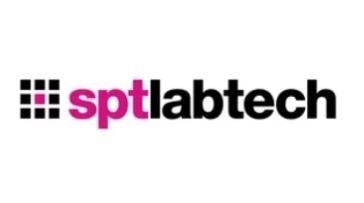The scale of next-generation sequencing (NGS) is growing, and the efficiency of the sequence generation process has substantially advanced over time. However, sample and library preparation bottlenecks continue to impact speed and productivity in genomic research.
Laboratory leaders are keen to overcome these challenges and are increasingly implementing automated solutions to address various features of the liquid handling workflows involved in genomics studies.
The boom in life sciences has resulted in a rapid uplift in genomic research demand, meaning it is essential that liquid handling automation solutions are embraced in labs of all sizes.
Inefficient Use of Valuable Laboratory Space
Adopting automation in genomic research brings many challenges, such as the simple matter of valuable laboratory space.
Automation technologies usually require significant square footage, which leads to deciding which instruments to choose, often involving complex trade-offs considering bench space.
Automated liquid handling for NGS is naturally challenging, integrating numerous essential tasks, such as pipetting, dispensing, incubating, and mixing.
Full automation is frequently only achieved by utilizing multiple single-task instruments in combination with additional accessories in an integrated workflow. As each separate task is integral to the research effort, having the correct tool for each job is crucial.
Genomics workflows demand precise, accurate, and reliable pipetting and dispensing of challenging liquids, including enzymatic reagents and beads, frequently at very low volumes. Incubation and shaking tasks also benefit from the improvements in efficiency that automation provides.
However, the current requirement for multiple single-purpose technologies and multiple instruments can lead to inefficient use of valuable laboratory space.
With research investment at an all-time high in a thriving life sciences industry, laboratory space is at a premium, and bench space for equipment is becoming costly and limited. This puts more pressure on labs to maximize the return on any instrument investment and its overall infrastructure.
In the UK, recent press has emphasized a critical lack of laboratory space supply in London, Oxford, and Cambridge research centers, with rents achieving upwards of £100 per square foot.
This demand is present globally, such as in US biotech hotspots like Boston, where half of the recent five million square feet laboratory construction was already leased a year ahead of its scheduled completion date.
Although larger pharmaceutical companies have more flexibility in space and resources, any facility must consider how they utilize their layout to guarantee maximum research productivity from every inch of their laboratory.
Multi-purpose Technologies for Liquid Handling and Other Applications
Removing redundancies in equipment by adopting multi-functional technologies that have a more compact footprint provides many benefits, such as lower environmental impact, lower direct costs, and a greater return on per square footage investment.
The solutions may be more accessible than initially considered. Technologies are advancing at pace, meaning robust multi-purpose technologies integrating liquid handling and other fundamental application processes that provide excellent performance within one unit are now becoming a real prospect.
These innovations offer a saving in space, increased research productivity, and an uptime boost that lab leaders so urgently need.
The firefly® Impact

Image Credit: SPT Labtech
SPT Labtech’s compact firefly liquid handling platform for automation of genomics workflows overcomes the issue regarding laboratory space by lowering costs, and widening access to automation, while still conserving valuable bench space.
The innovative all-in-one liquid handling of the firefly combines multiple technologies, including pipetting, dispensing, incubating, and shaking, within a single streamlined design for more efficient NGS library preparation.
Strengthened by powerful and intuitive software, firefly unlocks the potential of automation for all to accelerate genomic research. Learn more about firefly here.
About SPT Labtech
We Design and Manufacture Robust, Reliable and Easy-to-Use Solutions for Life Science
We enable life scientists through collaboration, deep application knowledge, and leading engineering to accelerate research and make a difference together. We offer a portfolio of products within sample management, liquid handling, and multiplexed detection that minimize assay volumes, reduce material handling costs and put the discovery tools back in the hands of the scientist.
At the Heart of What We Do
Many of our innovations have been born out of the desire to create solutions to existing customer problems; and it’s this ethos that drives SPT Labtech’s R&D efforts. Our strengths come from the trust our customers have with us to develop truly unique, automated technologies to meet their needs. We combine cutting edge science with first-rate engineering to put customers at the heart of everything we do.
A Problem-Solving State of Mind
The substantial breadth of expertise within our company enables us to be involved in the full life cycle of our products from the initial design concept, mechanical and software engineering and prototyping, to final manufacture and sale. These qualities allow us to offer the best possible technical and mechanical support to all the equipment that we supply, hence maintaining excellent client relationships.
Sponsored Content Policy: AZoLifeScience.net publishes articles and related content that may be derived from sources where we have existing commercial relationships, provided such content adds value to the core editorial ethos of News-Medical.Net which is to educate and inform site visitors interested in medical research, science, medical devices and treatments.